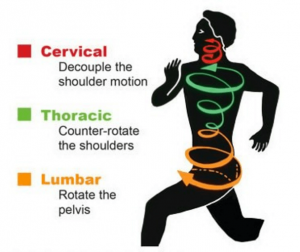With a strong focus on soft tissue, massage therapists and bodyworkers tend to serve their clients by helping to release tension from the muscles, which can allow for more optimal motion and function with less pain and restriction. However, if the same client who leaves your table feeling on top of the world goes back to his or her life and continues to live, work and play in all the same ways, that client will most likely wind up with the same pain and muscle tension not so long after the massage session. By blending both skeletal alignment and muscular balance, Myoskeletal Alignment Techniques (MAT) aim to create lasting solutions to pain and dysfunction by addressing the potential root causes of muscular tension.

As a practitioner who is looking to increase your salary as a massage therapist, being able to provide clients with pain relief through skeletal alignment and muscular balance that lasts can be the ticket to a much more profitable career. However, before you can begin boosting your income, you must undergo the training necessary to start applying MAT within your own practice. This means enrolling in massage continuing education with Erik Dalton. Originally trained as a Certified Rolfer through the Rolf Institute of Structural Integration, Dalton began developing MAT more than three decades ago. Inspired by research and discoveries in arenas such as osteopathic medicine and neurology, Dalton aimed to create a more integrative method of pain management to better help his clients with chronic pain.
As a practitioner who is looking to increase your salary as a massage therapist, being able to provide clients with pain relief through skeletal alignment and muscular balance that lasts can be the ticket to a much more profitable career.
It was through these efforts that MAT began to take shape as a modality that made good use skeletal alignment and muscular balance therapies utilizing the reflexogenic relationship of muscles, ligaments and joints. In fact, the name of this method of manual therapy comes from two terms: “myo,” meaning muscles and fascia, and “skeletal” in reference to spinal biomechanics. As Dalton applied his integrative method of pain management to more and more chronic pain clients, the results were so successful that he decided to introduce these specific techniques to his fellow manual therapists. It was 1998 when “Myoskeletal Alignment Techniques (MAT)” was released as one of the industry’s first nationally approved home study courses. The overwhelming positive response from the bodywork community led Dalton to open an entire MAT teaching facility, called the Freedom From Pain Institute.
Today, Dalton and his team at the Freedom From Pain Institute continue to practice MAT with all kinds of clients – teaching everything from the 16 CE Technique Tour to Myoskeletal workshops – while at the same time teaching other manual therapists around the world how to apply this highly effective modality. In essence, MAT merges deep tissue massage techniques with joint mobilization and a keen understanding of how posture patterns and other repetitive movements contribute to chronic pain. Thanks to this combination of skeletal alignment and muscular balance, clients with a broad array of pain conditions are finding relief through MAT — and many people are searching for local MAT practitioners to provide such services. Therefore, when it comes to finding out how to increase your salary as a massage therapist, consider MAT training if you wish to tap into and help the large number of people seeking relief from chronic pain.
From common client complaints such as neck pain and lower back pain to more specific issues such as fibromyalgia and aching hips, MAT has an effective approach for nearly any pain condition. A huge part of what makes this modality so successful when it comes to reducing and alleviating chronic pain is the fact that Dalton has designed strategic assessment protocols for practitioners to use. These assessments help manual therapists pinpoint which deep tissue massage and joint mobilization techniques will be the best bet for addressing each client’s issues. These initial evaluations can also help practitioners determine whether the client needs to incorporate any specific exercises or stretches into his or her home-care routine in order to stave off further pain problems.
Due to the fact that MAT can help to quickly illuminate the cause of pain and reduce the intensity and duration of pain without the use of medications or surgery, there is a wide variety of clients out there searching for MAT practitioners. From athletes to office workers, it seems every segment of the population is vulnerable to the effects of poor posture and repetitive movements — and the folks who find themselves suffering from ongoing pain are more than motivated to find relief.
On sale this week only!
Save 25% off the "Dalton Technique Treasures" eCourse
The “Dalton Technique Treasures” eLearning course is a compilation of some of Erik’s favorite Myoskeletal Alignment Techniques (MAT). Learn MAT techniques to assess and address specific sports injuries, structural misalignment, nervous system overload, and overuse conditions. ON SALE UNTIL April 29th! Get Lifetime Access: As in all our eLearning courses, you get easy access to the course online and there is no expiry date.






